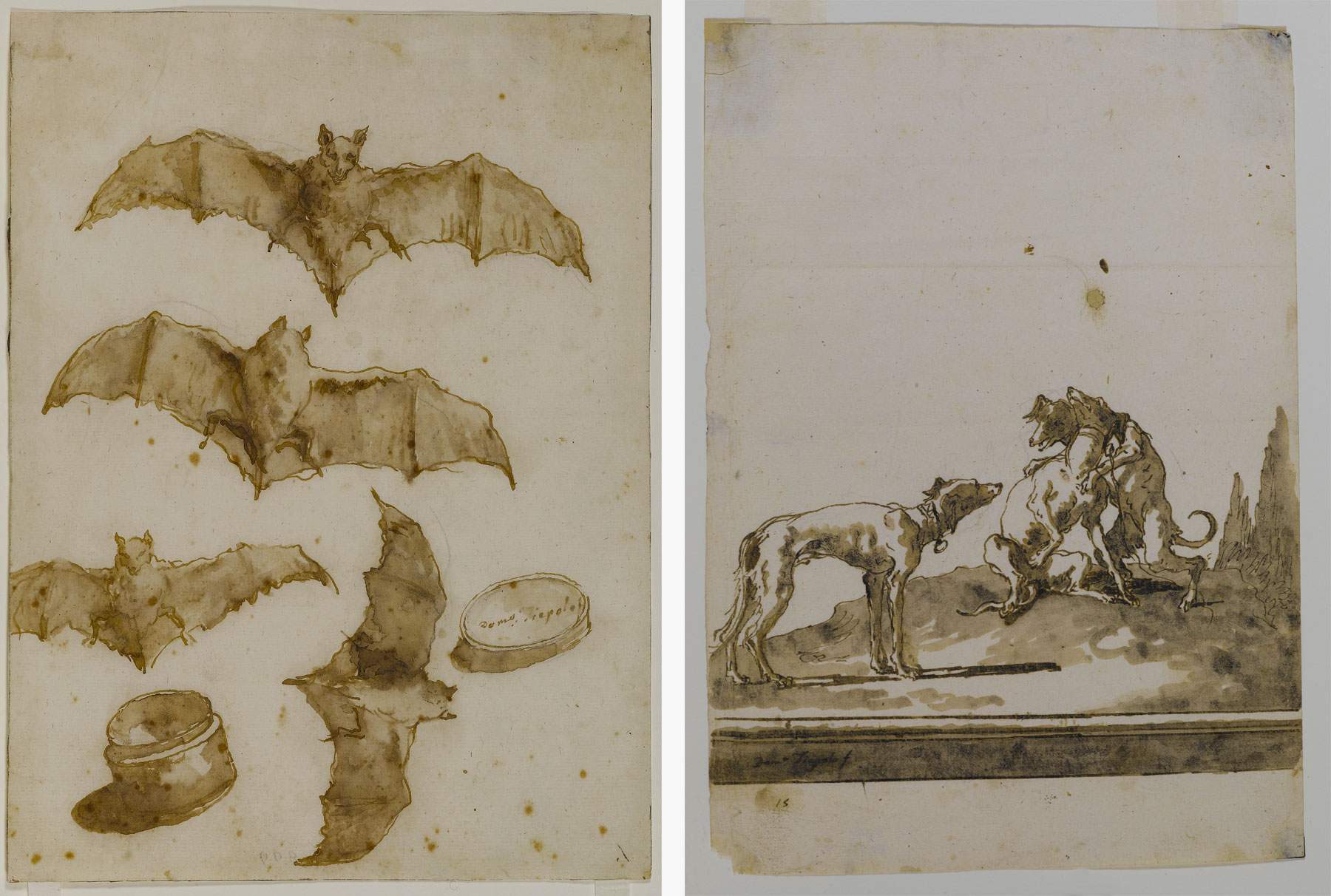Milan, a series of exhibitions on graphic collections at Castello Sforzesco: starting with Venice
Held from Sept. 15 to Dec. 19 at Milan’s Castello Sforzesco, in the Sale dell’Antico Ospedale Spagnolo, the show inaugurates a cycle of exhibitions devoted to the graphic collections of the Gabinetto dei Disegni and the Civica Raccolta delle Stampe “Achille Bertarelli.” The first dossier exhibition presents five great Venetian masters of the 18th century: Giovanni Battista and Giandomenico Tiepolo, Giovanni Battista Piazzetta, Antonio Canal known as Canaletto and Bernardo Bellotto.
The exhibition, titled Tiepolo, Canaletto and the masters of the Venetian eighteenth century in 48 works from the Gabinetto dei Disegni and curated by Francesca Mariano and Eleonora Scianna, stands as a rare opportunity for the public to admire works on paper that, by their very nature, must be kept in dedicated rooms and under special conditions and for this reason are excluded from the permanent museum itinerary of Castello Sforzesco. On display for this first date are 48 works that come from some of Milan’s famous private collections, such as those of two great art historians, Senator Giovanni Morelli and his student Gustavo Frizzoni, but also from the collections of the Milanese aristocracy such as the Trivulzio collection and that of Antonio Guasconi. Donated to the city since the nineteenth century, these now constitute an important graphic heritage documenting, among other things, the different aspects of eighteenth-century artistic expression in Venice.
The first room is entirely dedicated to Giambattista Tiepolo (1696-1770) and his son Giandomenico (1727-1804): drawings of caricatures, animals and mythological scenes but also the splendid etched series of Giovanni Battista’s Capricci and Giandomenico’s Idee Pittoresche. A repertoire of the highest level that includes some of the best graphic evidence of the two masters. The exhibition tour continues in the second room with one of Giovanni Battista Piazzetta ’s (1683-1754) masterpieces: the Portrait of Field Marshal Mathias von der Schulenburg, which came from the Trivulzio collection and arrived at Castello Sforzesco in 1935, and some “heads of character” by the same author, extremely representative of a typically 18th-century genre much loved by the artist. This is followed by some real and imaginary views of Padua and Venice engraved by Antonio Canal, better known as il Canaletto (1697-1768). Among the typically Venetian genres, vedutismo had since the 18th century great success and diffusion and led Venetian painters to work for the most illustrious European courts: on display here are two extraordinary prints made in Dresden for the great Elector of Saxony, Augustus III, by Bernardo Bellotto (1722-1780), nephew and pupil of Canaletto.
The two exhibition rooms have been set up permanently with the intention of making accessible, on a rotating basis, the Castello Sforzesco’s graphic heritage, a precious archive of prints and drawings, which for conservation reasons is normally kept in suitable rooms with controlled temperature and humidity conditions and is not included in the castle’s museum itinerary. The Civico Gabinetto dei Disegni (Civic Cabinet of Drawings) was established in the 1920s to provide a suitable location for works of art on paper, which had begun to flow into the city’s collections since the mid-19th century on the initiative of artists and members of the Milanese aristocracy. Over time the holdings have been enriched and now number about 35,000 drawings by Italian and foreign masters from the 15th century to the present day, with a particular wealth of Lombard examples.
The Civica Raccolta delle Stampe “Achille Bertarelli” is one of the largest image archives in the world, with a heritage of prints, posters, postcards and illustrations, estimated at around one million works. It was created in 1927 from an important nucleus donated by Achille Bertarelli and rigorously ordered by him according to iconographic criteria in sections such as “Plants and Views,” “Portraits,” “Historical Events,” and “Popular Prints,” which are subject to continuous implementation. It preserves masterpieces of the art of printing from its origins in the 15th century and is still a point of reference for contemporary graphic art in Italy.
The initiative comes fifty-two years after the important exhibition Drawings of the Eighteenth Century in the Collections of the Museum of Ancient Art of Milan and fifty after the one dedicated to the drawings of Giovanni Battista Piazzetta and the Academy curated by the then director of the Art Collections Mercedes Precerutti-Garberi. Hours: Tuesday through Sunday from 10 a.m. to 5:30 p.m. (last admission 5 p.m.). Closed Mondays. InfoPoint Castello Sforzesco 02.88463700, website www.milanocastello.it.
Pictured: left, Giandomenico Tiepolo, Study of Bats and Open Box (c. 1790; drawing pen, brush and ink on black pencil trace on paper; Milan, Castello Sforzesco, Gabinetto dei Disegni, inv. Au. B 2496). Right: Giandomenico Tiepolo, Dogs Playing (last quarter of 18th century; pen, brush, and ink drawing on black pencil trace on paper; Milan, Castello Sforzesco; Gabinetto dei Disegni, inv. Au. B 2491 )
 |
| Milan, a series of exhibitions on graphic collections at Castello Sforzesco: starting with Venice |
Warning: the translation into English of the original Italian article was created using automatic tools. We undertake to review all articles, but we do not guarantee the total absence of inaccuracies in the translation due to the program. You can find the original by clicking on the ITA button. If you find any mistake,please contact us.





























